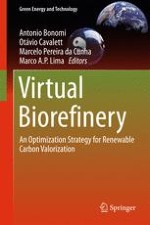This book presents a concise framework for assessing technical and sustainability impacts of existing biorefineries and provides a possible road map for development of novel biorefineries. It offers a detailed, integrated approach to evaluate the entire biomass production chain, from the agricultural feedstock production and transportation, to the industrial conversion and commercialization & use of products. The Brazilian sugarcane biorefinery is used as a case study; however, the methods and concepts can be applied to almost any biomass alternative. Chapters explore the main issues regarding biorefinery assessment, including feedstock production and transportation modeling, biofuels and green chemistry products, as well as assessment of sustainability impacts. This book is a valuable source of information to researchers in bioenergy, green chemistry and sustainability fields. It also provides a useful framework for government agencies, investors and the energy industry to evaluate and predict the success of current and future biorefinery alternatives.
